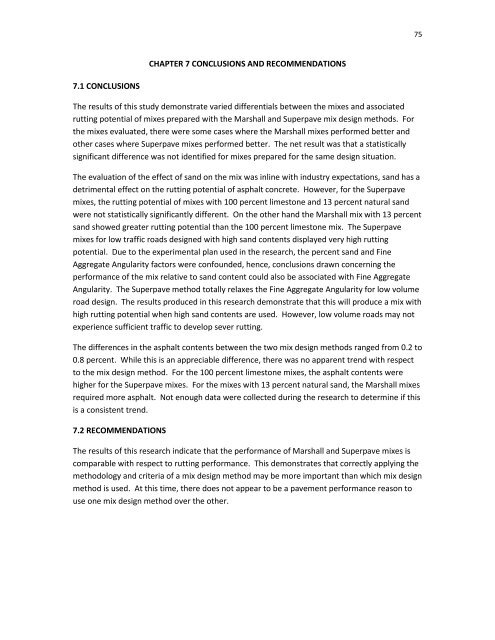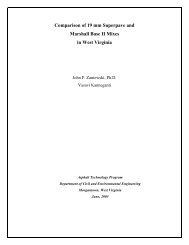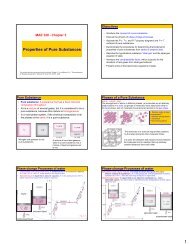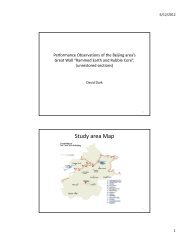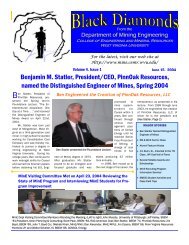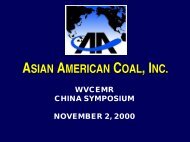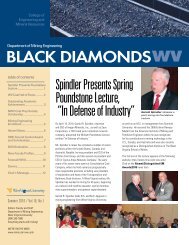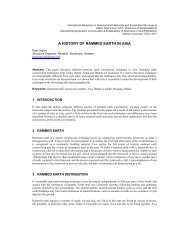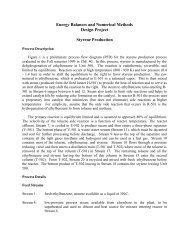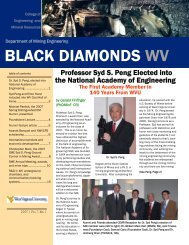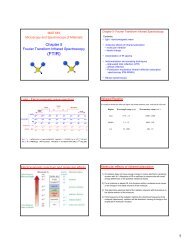Comparison of 9.5 mm SuperPave and Marshall Wearing I Mixes in ...
Comparison of 9.5 mm SuperPave and Marshall Wearing I Mixes in ...
Comparison of 9.5 mm SuperPave and Marshall Wearing I Mixes in ...
Create successful ePaper yourself
Turn your PDF publications into a flip-book with our unique Google optimized e-Paper software.
75CHAPTER 7 CONCLUSIONS AND RECOMMENDATIONS7.1 CONCLUSIONSThe results <strong>of</strong> this study demonstrate varied differentials between the mixes <strong>and</strong> associatedrutt<strong>in</strong>g potential <strong>of</strong> mixes prepared with the <strong>Marshall</strong> <strong>and</strong> Superpave mix design methods. Forthe mixes evaluated, there were some cases where the <strong>Marshall</strong> mixes performed better <strong>and</strong>other cases where Superpave mixes performed better. The net result was that a statisticallysignificant difference was not identified for mixes prepared for the same design situation.The evaluation <strong>of</strong> the effect <strong>of</strong> s<strong>and</strong> on the mix was <strong>in</strong>l<strong>in</strong>e with <strong>in</strong>dustry expectations, s<strong>and</strong> has adetrimental effect on the rutt<strong>in</strong>g potential <strong>of</strong> asphalt concrete. However, for the Superpavemixes, the rutt<strong>in</strong>g potential <strong>of</strong> mixes with 100 percent limestone <strong>and</strong> 13 percent natural s<strong>and</strong>were not statistically significantly different. On the other h<strong>and</strong> the <strong>Marshall</strong> mix with 13 percents<strong>and</strong> showed greater rutt<strong>in</strong>g potential than the 100 percent limestone mix. The Superpavemixes for low traffic roads designed with high s<strong>and</strong> contents displayed very high rutt<strong>in</strong>gpotential. Due to the experimental plan used <strong>in</strong> the research, the percent s<strong>and</strong> <strong>and</strong> F<strong>in</strong>eAggregate Angularity factors were confounded, hence, conclusions drawn concern<strong>in</strong>g theperformance <strong>of</strong> the mix relative to s<strong>and</strong> content could also be associated with F<strong>in</strong>e AggregateAngularity. The Superpave method totally relaxes the F<strong>in</strong>e Aggregate Angularity for low volumeroad design. The results produced <strong>in</strong> this research demonstrate that this will produce a mix withhigh rutt<strong>in</strong>g potential when high s<strong>and</strong> contents are used. However, low volume roads may notexperience sufficient traffic to develop sever rutt<strong>in</strong>g.The differences <strong>in</strong> the asphalt contents between the two mix design methods ranged from 0.2 to0.8 percent. While this is an appreciable difference, there was no apparent trend with respectto the mix design method. For the 100 percent limestone mixes, the asphalt contents werehigher for the Superpave mixes. For the mixes with 13 percent natural s<strong>and</strong>, the <strong>Marshall</strong> mixesrequired more asphalt. Not enough data were collected dur<strong>in</strong>g the research to determ<strong>in</strong>e if thisis a consistent trend.7.2 RECOMMENDATIONSThe results <strong>of</strong> this research <strong>in</strong>dicate that the performance <strong>of</strong> <strong>Marshall</strong> <strong>and</strong> Superpave mixes iscomparable with respect to rutt<strong>in</strong>g performance. This demonstrates that correctly apply<strong>in</strong>g themethodology <strong>and</strong> criteria <strong>of</strong> a mix design method may be more important than which mix designmethod is used. At this time, there does not appear to be a pavement performance reason touse one mix design method over the other.


